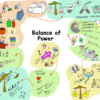 Ethics of Artificial Intelligence and Robotics
Ethics of Artificial Intelligence and Robotics
Seven requirements:
- Human oversight,
- Technical robustness,
- Privacy and data governance,
- Transparency,
- Fairness,
- Well-being,
- Accountability
The main fields involved in robot ethics are:
- Robotics,
- Computer science,
- Artificial intelligence,
- Philosophy,
- Ethics,
- Theology,
- Biology,
- Physiology,
- Cognitive science,
- Neurosciences,
- Law,
- Sociology,
- Psychology,
- Industrial design
the foundation for robot ethics was Runaround (story), a science fiction short story written by Isaac Asimov in 1942 which featured his well known Three Laws of Robotics. These three laws were continuously altered by Asimov, and a fourth, or zeroth law, was eventually added to precede the first three, in the context of his science fiction works
Many advertisers, marketers, and online sellers will use any legal means at their disposal to maximise profit, including exploitation of behavioural biases, deception, and addiction generation (Costa and Halpern 2019 [OIR]). Such manipulation is the business model in much of the gambling and gaming industries, but it is spreading, e.g., to low-cost airlines. In interface design on web pages or in games, this manipulation uses what is called “dark patterns” (Mathur et al. 2019). At this moment, gambling and the sale of addictive substances are highly regulated, but online manipulation and addiction are not—even though manipulation of online behaviour is becoming a core business model of the Internet
https://en.wikipedia.org/wiki/Ethics_of_artificial_intelligence#Robot_rights.
The short term “roboethics” was most likely coined by Gianmarco Veruggio.Recently unveiled by Engineered Arts, a UK lab, Ameca, the world’s most advanced humanoid robot comes complete with expressive facial expressions and physical movement, or body language.
Ameca Gestures (35 seconds)
Ameca Interactions (21 sec)
Ameca Media Teaser (42 sec)
Boston Dynamics (8:02 minute video)
Advanced Robots (12:17 video)

